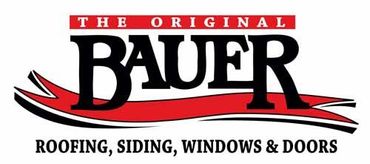Filing an insurance claim for storm damage to your roof involves several important steps to ensure a smooth and successful process. Here's a general guide:
-
1. Inspect the Damage
After a storm, assess the extent of the damage to your roof. Look for missing shingles, dents, cracks, leaks, or other signs of damage. Document the damage with photographs and notes.
-
2. Review Your Insurance Policy
Familiarize yourself with your homeowner's insurance policy. Check the coverage details, deductible amount, and any specific requirements for filing a claim related to storm damage.
-
3. Contact Your Insurance Company
Notify your insurance company as soon as possible about the storm damage. Most insurance policies have a specified timeframe within which you need to report the damage. Have your policy number and information about the damage ready when you call.
-
4. Schedule a Professional Inspection
Request an inspection from a licensed roofing contractor. They can provide a detailed assessment of the damage, which will be important for your insurance claim. Make sure to get a written report and estimate for repairs.
-
5. Document Everything
Keep records of all communication with your insurance company, including the date, time, and names of the representatives you spoke to. Also, keep copies of the inspection report, photographs of the damage, and any correspondence related to the claim.
-
6. Obtain Repair Estimates
If your roofing contractor's estimate differs from the insurance adjuster's assessment, you may need to get additional estimates for repairs. Make sure to share these estimates with your insurance company.
-
7. File the Claim
Your insurance company will guide you through the claims process. You'll need to complete a claim form and provide the necessary documentation, including the inspection report, photographs, and repair estimates.
-
8. Meet with the Adjuster
The insurance company may send an adjuster to assess the damage in person. Your roofing contractor should be present during the inspection to ensure that all damage is accurately documented.
-
9. Review the Settlement Offer
Once the insurance adjuster completes the assessment, the insurance company will provide a settlement offer. Review it carefully to ensure it covers all necessary repairs. If you have concerns, discuss them with your insurance company.
-
10. Approval and Repairs
If you're satisfied with the settlement offer, you can proceed with the repairs. Some insurance companies issue payments in multiple installments: one upfront and the rest after the work is completed and inspected.
-
11. Keep Records
Throughout the repair process, keep records of expenses, invoices, and any additional costs incurred. This documentation may be required for reimbursement.
Remember that the insurance claims process can vary based on your location, insurance provider, and policy terms. It's important to communicate openly with your insurance company, be prepared with evidence of the damage, and work with reputable professionals for inspections and repairs. If you're unsure about any aspect of the process, consider seeking advice from a professional or public adjuster who specializes in insurance claims.
BROWSE OUR WEBSITE
CONTACT INFORMATION
Phone: (937) 298-3100
Email: dayton@bauerroofing.com
Address: 3000 Springboro West Rd.
Moraine, Ohio 45439

